BlackBerry: a postmortem of the former smartphone king
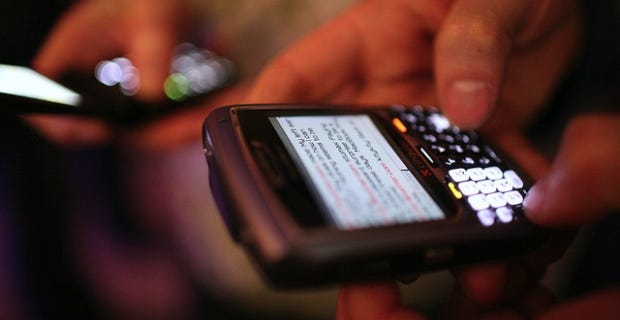
It’s fitting that just a day after Apple celebrated reaching a $3 trillion market capitalization for the first time in US history, BlackBerry is turning off the lights on the last few holdouts. No, Apple’s iPhone didn’t single-handedly unseat BlackBerry from its once-lofty perch in the early smartphone market. But it can now join its Google-branded co-conspirator in walking away from the former king of smartphones’ grave.
The rise of BlackBerry
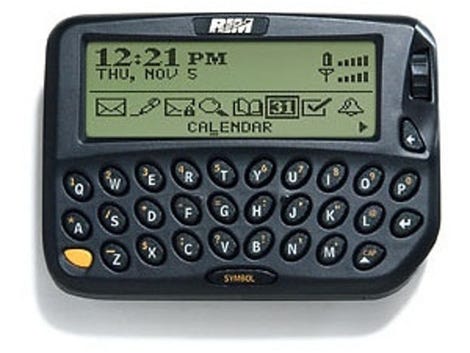
BlackBerry 850
BlackBerry — or Research in Motion (RIM), as it was called for most of its halcyon days — began its meteoric rise in 1999 with the BlackBerry 850, a pager-type device that supported two-way email communications via a built-in QWERTY keyboard. It built on an earlier line of “Inter@ctive Pager” products that were retired when the BlackBerry name rose to prominence.
While the 850 laid the foundation for BlackBerry’s love of QWERTY-equipped devices, it wasn’t until 2003 that the company launched anything that could even be remotely recognized as a smartphone. That product was the first entry in the BlackBerry 6200, or BlackBerry “Quark,” line. In a time when most cellphones were still of the flip variety, the Quark provided a monochrome display situated above a full QWERTY keyboard with a few extra navigation keys. It provided email via early 2G cellular data networks — and not much else.
It was quickly followed by variants with color displays in the 7200 line, as well as BlackBerry “Charm” models in the 7100 series. The 7100s skipped the full QWERTY experience in favor of RIM’s SureType keyboard, which used two letters per button. Unsurprisingly, this layout never caught on despite its use in later lines like the BlackBerry Pearl.
The next several generations would see display improvements, exterior redesigns, and the addition of exciting new tech like Bluetooth. Then, in 2007, RIM launched what would go on to become one of the most beloved models it ever created: the BlackBerry Curve. This unit’s new trackball-based navigation was a game-changer, allowing users to more easily and quickly navigate the device’s growing list of capabilities. While the trackball would eventually be replaced by a trackpad in the BlackBerry Bold line, the design language of the Curve would continue to inform every truly iconic BlackBerry handset ever produced.
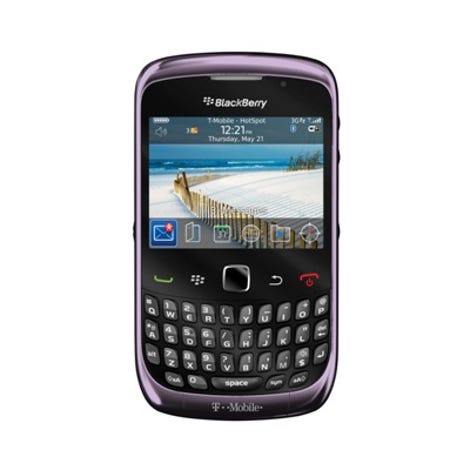
BlackBerry Curve 9360
The beginning of the end
Unfortunately for the BlackBerry Curve, 2007 happened to be the same year that Steve Jobs got up on stage and announced the iPhone. Unlike the BlackBerry take on a smartphone, it relied entirely on touchscreen-based interactions to let users text, email, browse the web, and more. (We’ll skip all of the now-humiliating hot takes that came out at the time decrying Apple’s choices.)
User-friendly input methods aside, there was one very important aspect of the iPhone’s strategy that would come to haunt RIM for years, and it may have been the single greatest factor in BlackBerry’s downfall: Apple focused on consumers from the very beginning.
While RIM spent years trying to convince the average user that its business-centric devices could make great smartphones for them, Apple instead enticed those users into its early ecosystems so deeply that they eventually began looking for ways to integrate their iPhones into their professional lives. While it may have taken quite a while longer, Android followed a similar path as well.
A new contender enters the ring
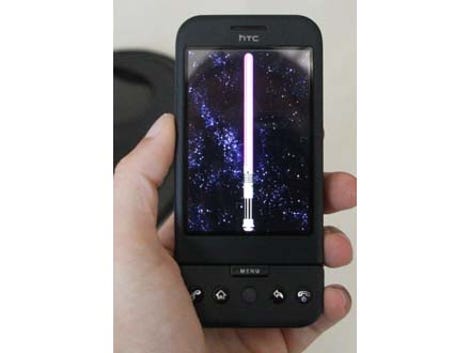
HTC Dream
The HTC Dream, also known as the T-Mobile G1, made its debut in 2008. This direct competitor to the iPhone took a page from both RIM and Apple, including a touchscreen-based OS in Android and a hardware QWERTY keyboard situated under its display, which could be pivoted off to one side. This combination of touchscreens and keyboards would inform many early Android models, including the Dream’s follow ups, and Motorola Droid.
While Apple continued struggling at this point to convince users that the extra cost of a smartphone and its inherent service plans were worth it, Android struggled to convince users that they’d even be able to figure out how to use it. Its reputation as a geekier, cheaper iPhone would linger for years, regardless of whether or not either accusation was warranted.
That reputation as an inexpensive competitor would go on to become one of Android’s greatest strengths. As its hardware and software caught up to the quality its iPhone contemporaries provided, its pricing remained lower on many models, allowing a growing portion of the population to buy an Android device as their first smartphone. This is one of the main reasons Google’s mobile OS still tops the chart to this day…even if it did take it a few more years to get there.
The slow decline begins
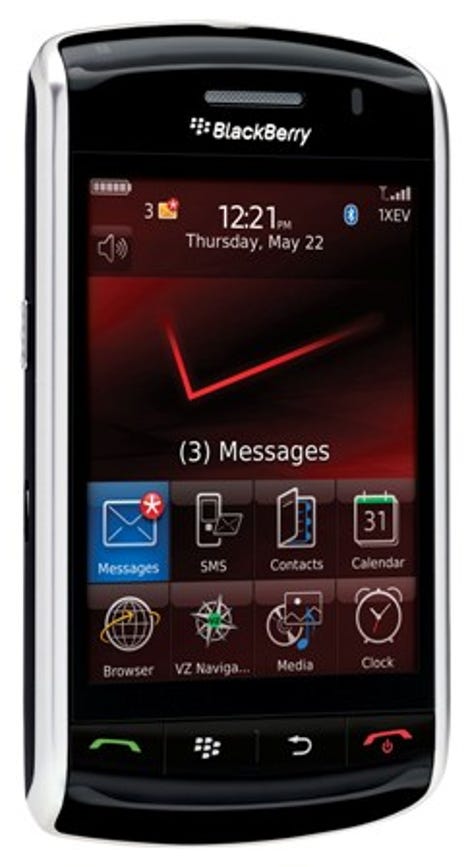
BlackBerry Storm
At this point, the death knell had already been sounded — BlackBerry just hadn’t heard it yet. In fact, it was this kind of slow reaction to what the market was clearly saying that may have put the final nail in the coffin. While Apple and Google spent the next couple of years building on each other’s accomplishments to attract the most consumers, BlackBerry remained staunchly loyal to its existing business user base to a grievous fault.
There were half-hearted attempts at more direct iPhone and Android smartphone competitors. The BlackBerry Storm is likely the most well-known of these, as it was the first device from the company to rely entirely on touchscreen input, a major risk at the time. Despite the novelty of its tactile click display (which actually saw the entire screen depress like a giant button), it failed to capture many consumer users. Reviews were also generally awful, citing poor software integration of the touchscreen, buggy software, and a generally terrible user experience. The reactions to the BlackBerry Storm 2 in 2009 weren’t much better.
This failure to figure out what consumers wanted would hang over BlackBerry for the next two years. Fortunately for the company, its loyal user base and famous users, like then-President Barack Obama, helped it stay on top, perhaps for longer than it really should have.
The fall
BlackBerry’s last good year was 2010. By halfway through, its numbers had already started to slip from their peak, both in terms of sales and installed user base. In September 2010, RIM accounted for 37.3% of all smartphone users, according to ComScore. Apple and Google, meanwhile, had captured 24.3% and 21.4%, respectively. By December, RIM had fallen over five points to 31.6% while Google had gained over seven to reach 28.7%. It was nothing but downhill from there for BlackBerry.
By early 2011, Android had passed BlackBerry to capture 31.2% of users. RIM’s take on the smartphone swiftly plummeted into single-digit market share figures, and by the end of 2014, it accounted for just 1.8% of all users.
To its credit, BlackBerry did not go quietly. It attempted everything from its own take on a completely new touchscreen-native OS, to revivals of classic BlackBerry models from earlier years, to finally just giving in and developing phones for the ever-growing Android ecosystem. Unfortunately, the Waterloo-based company had already met its battle of the same name.
Google and Apple had tapped the much larger pool of private consumers and indoctrinated them to their takes on what a smartphone should be for both their personal and professional lives. The devices that had once been called “Crackberries” were nothing more than an embarrassment to own by the time the final BlackBerry was produced by the company formerly named RIM in 2016.
Death spasms
The BlackBerry name carried enough clout that it lived on for another half decade or so, being licensed out to third party manufacturers for use on a string of largely forgettable smartphones running some variant of Android. Thankfully for buyers of those Android-BlackBerry units, even those produced by the original company will continue to work for the foreseeable future.
As we put down our QWERTY keyboards, tiny trackballs, and weird clickable screens, spare a moment to remember a smartphone company that just couldn’t get out of its own way when it came time to convince the average consumer — and not just high-powered business executives — that they, too, needed a smartphone.

Pingback: Bubble Tea
Pingback: visit this site
Pingback: Acquista ghb in Europe
Pingback: F1 shake
Pingback: Stephen
Pingback: sexxybet168
Pingback: freshbet
Pingback: find out this here